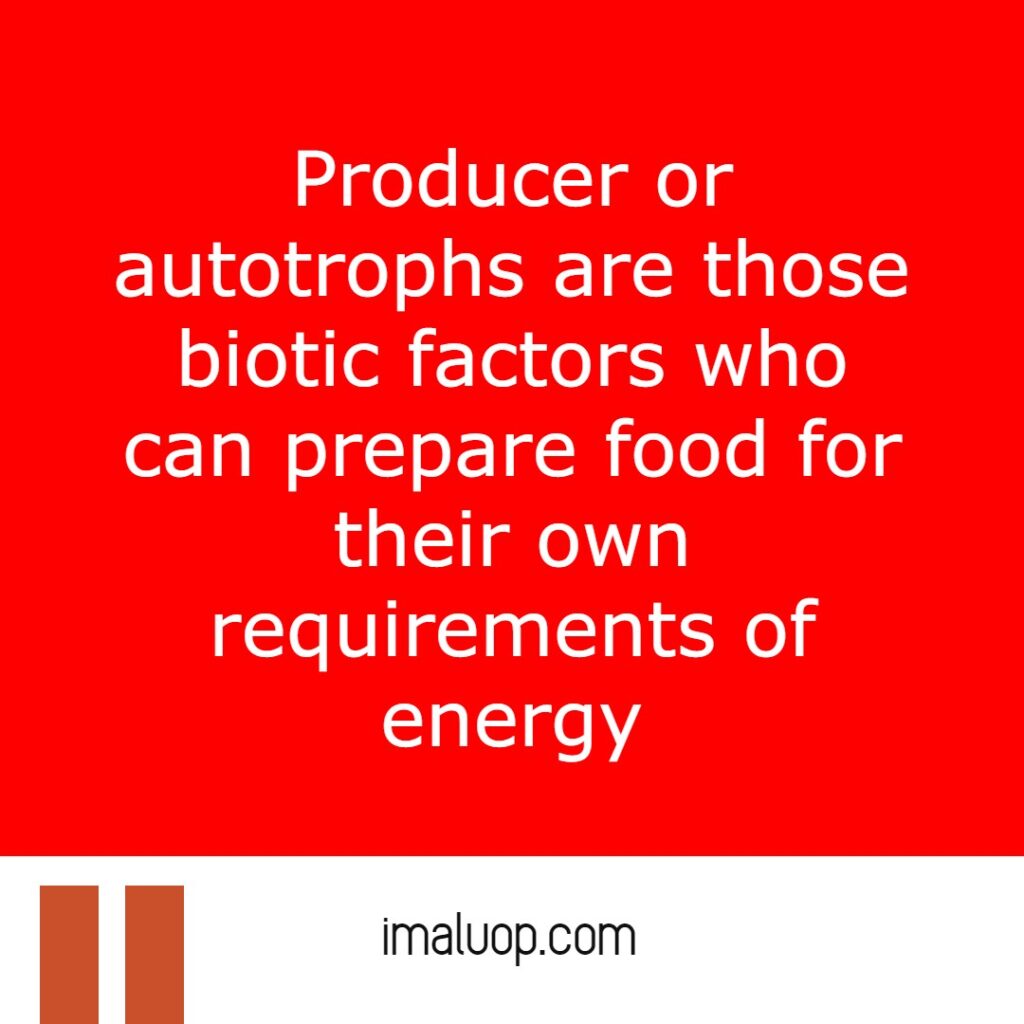Biotic Factors in an Ecosystem: A variety of components we can observe in our surroundings which may be living or non living. Different components of the environment present in our surroundings which have features of living organisms are considered in the category biotic factors. All animals and plants including those who look like non living but actually they are living also biotic factors.
What are Biotic Factors in an Ecosystem ?
Biotic Factors give a very important impact on an environment as well as on abiotic factors. Not only plants and animals which we can see on naked eyes but the microorganisms which are not visible in naked eyes are also components of biotic factors.
All members of biotic factors are dependent on one another to sustain their existence in the environment. Removal or addition of any elements of the biotic factors affect the environment in a great way. It can damage the balance of an ecosystem if any major biotic factors are removed or any harmful biotic factors added in an ecosystem.

Different Types of Biotic Factors in an Ecosystem:
Depending upon how an organism react with other members of the biotic factors we can categorise all the biotic factors in following groups –
Producers: Producer or autotrophs are those biotic factors who can prepare food for their own requirements of energy. They are very important for a ecosystem because most of the other members of the biotic factors depends directly or indirectly on the Producer.
Without their existence it is difficult to imagine existence of other biotic factors because they are dependent upon producer. Only producer can utilise inorganic materials found in nature and can prepare organic food which is not possible in case of consumer. Even on earth first food and energy sources for other biotic factors was producer.
The photoautotroph we see today is an example of producer who can release energy using inorganic raw material. Photoautotroph like different types of algae, plants and bacteria are common examples of producer because they capable to convert chemical energy inside different inorganic materials to useful energy which can be used by living cells.

Pigment present in most of the photoautotroph are responsible for trap the energy from sunlight and convert it into usable energy for a cells. Then they store the energy inside different biochemical which can be used as a energy sources in future. They store the energy inside different biochemical like protein, sugar or lipid which are easily utilised by living cells.
Living cells further process these biochemicals to release energy to continue different types of daily life function. Chemoautotrophs also perform the same function but they use different inorganic chemicals instead of sunlight to prepare their own food.
Consumer: Consumer or heterotrophs are those components of biotic factors who can not prepare food in their body to continue their life. They are directly or indirectly dependent on producers for energy required for daily life energy requirements. Herbivores who take produce as food are dependent on the producer for energy requirements.
Carnivores eat on herbivores and omnivores feed on both plants and animals are also examples of consumers or heterotrophs. Sometimes we can observe symbiotic relationships between producers and consumers for example bees and wasps are attracted by the nectar produced by some plants which cause pollination to the plant.
Decomposer: Decomposer or detritivore are the example of biotic factors who collect energy from decomposing detritus. They collect energy from both decomposing producers and consumers.
They help to recycle the chemicals in the ecosystem because the chemicals present inside plants and animals should be recovered otherwise it would be difficult to find inorganic chemicals for the producer next time. Detritivores like worm, soil bacteria, flies and fungi are responsible for recovering the chemical from dead organisms and returning back to the environment.

Read More:
- Different Modes of Excretion in Plant
- Different modes of excretion in animals
- Abiotic Factors in an Ecosystem
Reference: Biotic Factors in an Ecosystem
Hi Everyone!!! Welcome to Imaluop. Imaluop always try to learn some new and he want to share to other people. Here we will try to learn various topics on Science, specially on Biological Sciences.
